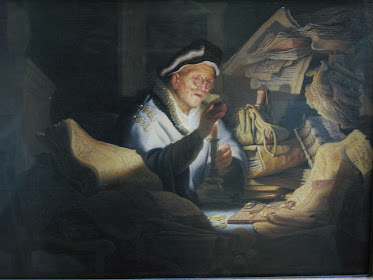From Prodigals to Compassionate Samaritans
How Howard Thurman's insights benefit current discussions about what to do in the face of the injustices that so many people face today: highlighting parts of my recent book, Howard Thurman and the Quest for Community: From Prodigals to Compassionate Samaritans.
Today's post focuses on chapter 4, "What do Parables Want?" which argues that Jesus, and Thurman following behind him, aimed his parables in a historical context in which he and his audience were among those who had their "backs against the wall," and the parables, among other things, were aimed at spurring hearers to action.
Here are some key quotes from the chapter. As a whole they illustrate that Howard Thurman understood the first-century socio-economic context of Jesus's teachings better that most New Testament scholars did in 1949:
“People living on a bare subsistence level thus viewed patronage—where the elites distribute goods to the nonelites—as a moral obligation; people who had resources were expected to help in difficult circumstances.”
“Jesus was an impoverished first-century Jewish artisan who was a member of a politically, militarily, and economically oppressed minority and who spoke prophetic words of judgment against the oppressors of his people. His parables and other teachings focus extensively on issues of money and power, including condemnations of the wealthy elite because of their oppression of the poor. Such socioeconomic contexts thus are essential for understanding numerous aspects of the parables of Jesus.”
“Jesus’s message affirmed the inherent worth of the disinherited as children of God, the necessity of the love- ethic to pervade all relationships, and the power of love to create community in the midst of and even over against the forces of evil.”
“How should wealthy elites live…? Jesus demands that they operate with vertical generalized reciprocity—a redistribution from the advantaged to the disadvantaged that expects nothing in return. Since God showers humankind with vertical generalized reciprocity, humankind should follow God’s lead in their relationships with each other (e.g., 11:11– 14).…The elites’ concern for money is linked to their lack of concern for human beings, and this connection between riches and unrighteousness can only be broken through vertical generalized reciprocity (14:12– 14; cf. 16:9, 19– 31).”
The "Digging Deeper" observations drive home the main points above:
- The Gospel of Luke was written by someone in a higher socioeconomic position than Jesus. Although Jesus’s perspective as being “disinherited” is clear in his parables, the author of Luke in many respects interprets the parables for those who like him, economically at least, could be included among the “inherited.” The focus thus shifts slightly from Jesus’s greater emphasis on the condemnation of the elite—which Luke still includes—to Luke’s greater emphasis on Jesus’s teachings serving as a warning to such elites (which Jesus also still includes).
- Parables include Jesus’s prophetic critique “from below” of the wealthy elite. The rich fool parable (Luke 12:16–20), for example, illustrates Jesus’s admonition about rapacity (Luke 12:15; cf. 12:21). Jesus then elaborates the point when he enjoins his disciples not to worry about material possessions but to strive for the kingdom of God instead (12:22–31). The section concludes with an exhortation to sell their possessions “and give alms” (12:32–34; cf. 14:12–14; 18:18– 23). For Luke, then, the rich farmer exemplifies what to avoid: someone who does not strive for the kingdom, who does not care for those around him (especially those with their backs against the wall), whose treasure is material goods not the “unfailing treasure in heaven” (12:33), and whose life consists “in the abundance of possessions” (12:15).
- Recent scholarship has increased our understanding of the “weapons of the weak” and “hidden transcripts”—sometimes used by Jesus to give ambiguous (and subversive) answers in threatening situations (see page 50 in the text)—so Thurman’s arguments in Jesus and the Disinherited could be reevaluated considering these insights.





